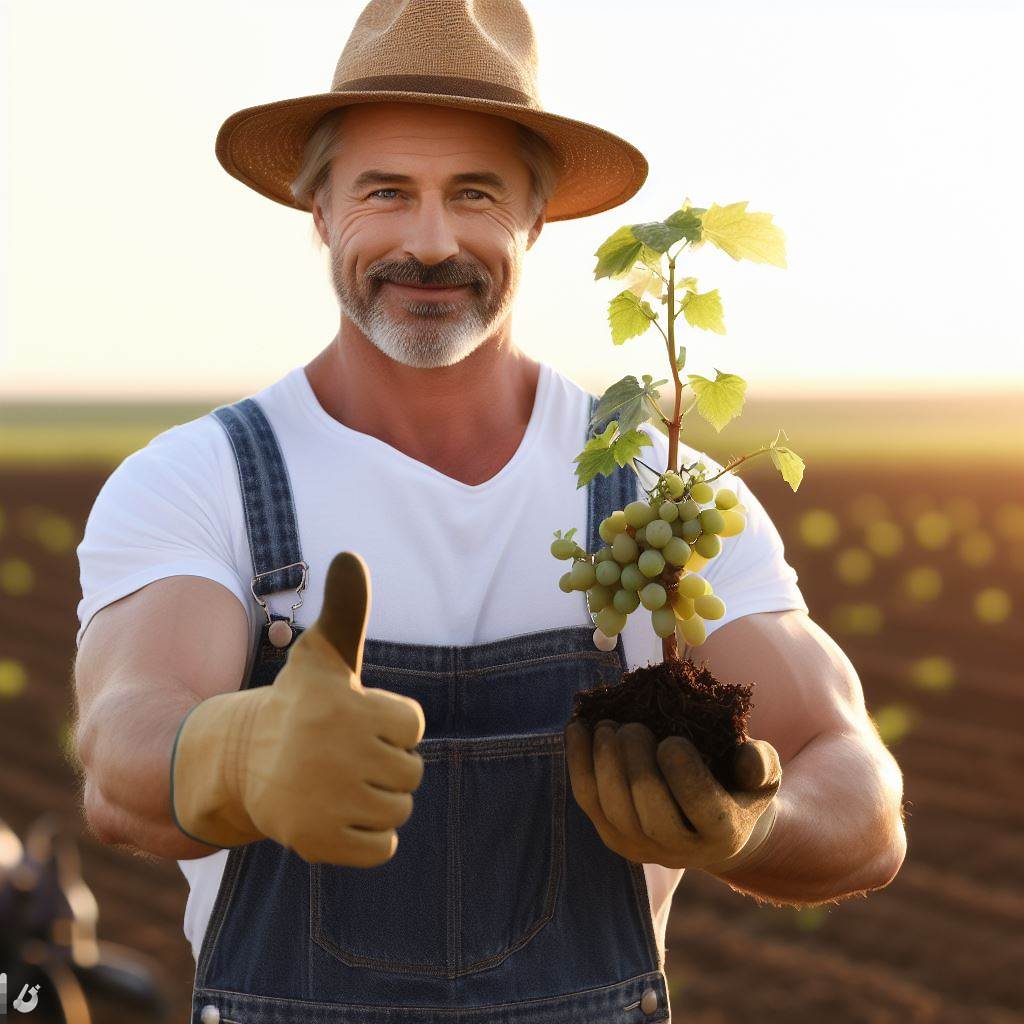Soil and Sweat: The Reality of Farming
Last Updated on March 4, 2024
Introduction
Farming is crucial for food production and plays a significant role in ensuring global food security.
It is a labor-intensive profession that demands dedication and hard work.
In this blog section, we will dive into the reality of farming, specifically focusing on the importance of soil and the effort required.
Farming is the backbone of our society, providing us with the essential sustenance we need to survive.
Farmers cultivate crops and raise livestock, contributing to the availability of food and raw materials for various industries.
Without farming, we would face food shortages and economic instability.
The foundation of successful farming lies in the soil, a precious resource that farmers rely on to grow crops.
Soil quality determines the yield and quality of produce, making it crucial for farmers to maintain and enhance soil health.
This process requires significant effort and dedication.
Farmers must constantly toil the land, tilling it, planting seeds, and nurturing crops.
From sowing to harvesting, they face numerous challenges such as pests, diseases, and unpredictable weather conditions.
The physically demanding nature of farming requires farmers to put in relentless hard work, often working long hours in all weather conditions.
Moreover, farming involves a deep connection with nature. Farmers are not just caretakers of the land; they are also stewards of the environment.
They need to adopt sustainable practices to minimize environmental impact and preserve resources for future generations.
Soil and sweat are inseparable components of farming. The reality of farming encompasses both the challenges and the rewards.
In the following sections, we will explore the obstacles faced by farmers and the remarkable resilience they demonstrate in their pursuit of feeding the world.
The Importance of Soil in Farming
Explanation of how soil is the foundation for farming
Soil is the lifeblood of agriculture, serving as the solid groundwork for all farming activities.
It provides a medium for seed germination, root anchorage, and nutrient absorption for crops.
Additionally, soil acts as a reservoir for water, facilitating irrigation and supporting plant growth.
Description of different types of soil and their characteristics
- Clay soil: characterized by its fine texture, holding water and nutrients but lacking proper aeration.
- Sandy soil: coarse-textured and well-draining, retaining less water and nutrients compared to other types.
- Loam soil: a perfect balance of sand, silt, and clay, providing optimal drainage and nutrient retention.
Each type exhibits unique properties that influence crop growth and dictate farming techniques.
The role of soil fertility in crop production
Soil fertility directly impacts plant nutrition and the overall success of crop production.
Essential nutrients, such as nitrogen, phosphorus, and potassium, must be present in adequate amounts.
Fertile soil fosters robust plant growth, higher crop yields, and improved resistance against diseases and pests.
Conversely, poor soil fertility leads to nutrient deficiencies, stunted growth, and reduced crop quality.
Farmers employ various methods, including nutrient management and soil amendments, to enhance soil fertility.
This ensures a steady supply of nutrients for crops, sustaining their health and productivity.
The importance of soil cannot be overstated in farming, as it serves as the foundation for successful agricultural practices.
Understanding the different soil types and their characteristics allows farmers to make informed decisions.
By optimizing soil fertility through proper management, farmers can maximize crop production and overall farm sustainability.
In essence, soil is not just dirt; it is a valuable resource essential for feeding the world population.
Appreciating its significance and implementing sustainable soil management practices is crucial for ensuring a prosperous future in farming.
Read: The Apple Orchard: Seasons of Hardship
Challenges Faced by Farmers
Weather and Climate
Farming is heavily dependent on weather and climate conditions.
The unpredictability of weather patterns poses significant challenges for farmers.
From extreme temperatures to droughts or heavy rainfall, farmers must cope with ever-changing conditions that affect their crops and livelihoods.
For instance, prolonged droughts can lead to water scarcity, causing crops to wither and die.
On the other hand, excessive rainfall can lead to flooding, destroying crops and causing soil erosion.
Extreme temperatures, whether excessively hot or cold, can also harm crops and affect their growth and productivity.
To mitigate these weather-related challenges, farmers employ various strategies.
One common approach is irrigation, where water is supplied to crops through controlled systems.
This helps overcome water scarcity during dry spells and ensures plants receive sufficient moisture for optimal growth.
Additionally, farmers practice crop rotation, a method of planting different crops in successive seasons.
This helps replenish soil nutrients, control pests and diseases, and adapt to changing weather patterns.
By switching crops, farmers can reduce the risk of specific weather-related impacts on a particular plant.
Furthermore, some farmers adopt greenhouse farming, creating controlled environments that shield crops from extreme weather conditions.
Greenhouses provide a stable climate where temperature, humidity, and light can be regulated, allowing farmers to grow crops even during adverse weather outside.
Pests and Diseases
Pests and diseases are constant threats to agricultural production.
They can cause significant damage to crops, leading to reduced yields and economic losses for farmers.
Identifying and managing these pest and disease outbreaks is crucial for sustainable farming.
Common pests include insects like aphids, caterpillars, and beetles, which feed on crops and cause damage.
Diseases can be caused by fungi, bacteria, or viruses and lead to wilting, rotting, or discoloration of plants.
These pests and diseases not only affect the quality of crops but also reduce their market value.
To combat these challenges, farmers employ various methods. Integrated pest management (IPM) is a holistic approach that combines preventive measures, biological control, and targeted pesticide use.
By promoting natural predators and beneficial insects, farmers reduce the reliance on chemical pesticides while minimizing pest populations.
Crop rotation is another effective strategy to manage pests and diseases. By rotating crops, farmers break the life cycle of pests and disrupt disease progression, reducing the likelihood of outbreaks.
It also helps in managing soil fertility and improves overall soil health.
Additionally, farmers invest in disease-resistant crop varieties or use disease-resistant rootstocks.
These plant varieties have been specifically bred to resist or tolerate common diseases prevalent in their region.
Through careful selection, farmers can minimize the impact of diseases on their crops.
In a nutshell, farmers face numerous challenges related to weather and climate as well as pests and diseases.
However, through strategic planning and the adoption of sustainable farming practices, they can mitigate these challenges.
By staying resilient and proactive, farmers ensure food security and contribute to the agricultural industry’s growth and development.
Read: Fields of Green: A Young Farmer Tale

Hard Work and Sweat of Farmers
The physical labor involved in farming
- Farmers engage in physically demanding tasks such as plowing, sowing, and harvesting crops.
- They tirelessly work under the scorching sun, bending and stooping, tending to their fields.
- The repetitive manual labor requires strength, stamina, and resilience.
- They carry heavy buckets, load trucks with produce, and mend fences.
- The physical labor involved in farming is intense, demanding, and unforgiving.
The long hours and commitment required by farmers
- Farmers start their day before sunrise and work till late in the evening.
- They have to make use of every minute of daylight, maximizing productivity.
- The long hours are necessary to ensure crops are cared for properly.
- Farmers rarely take vacation or time off because their job is a year-round commitment.
- The dedication and commitment required by farmers are unparalleled.
The mental and emotional challenges faced by farmers
- Farmers face constant uncertainty due to weather conditions and market fluctuations.
- They bear the pressure of ensuring a successful harvest to sustain their livelihood.
- Financial burdens, crop diseases, and pests can cause significant mental and emotional stress.
- Farmers often isolate themselves, working alone in their fields, leading to feelings of loneliness.
- The mental and emotional challenges faced by farmers can be immense and overwhelming.
Read: From Seeds to Success: An Organic Farmer
Discover More: Small Farm, Big Yield: Secrets Unveiled
Sustainable Farming Practices
Introduction to the concept of sustainable farming
Sustainable farming is a method that aims to maintain and enhance the productivity of agricultural resources.
Examples of sustainable farming practices
- Crop rotation: Farmers alternate the types of crops grown in a specific area, which helps prevent soil depletion and control pests naturally.
- Conservation tillage: This practice reduces soil erosion and retains moisture by disturbing the soil as little as possible during planting.
- Integrated pest management: Farmers use a combination of biological, physical, and chemical control methods to minimize the use of pesticides.
- Agroforestry: By planting trees alongside crops, farmers create a more diverse and resilient agricultural system while providing additional benefits like shade and windbreaks.
- Cover cropping: Fields are planted with cover crops during fallow periods to protect the soil from erosion, enhance fertility, and suppress weed growth.
- Water conservation techniques: Farmers implement efficient irrigation systems, such as drip irrigation, mulching, and rainwater harvesting, to minimize water usage.
- Organic farming: This practice avoids the use of synthetic chemicals, genetically modified organisms, and antibiotics, promoting natural soil fertility and biodiversity.
The benefits of sustainable farming for both farmers and the environment
- Soil health improvement: Sustainable farming practices enrich the soil with organic matter, enhancing its structure, nutrient content, and water retention capacity.
- Long-term profitability: By reducing input costs, such as fertilizers and pesticides, sustainable farming practices can increase farmers’ profits over time.
- Climate change mitigation: Sustainable farming helps sequester carbon dioxide from the atmosphere, contributing to the reduction of greenhouse gas emissions.
- Biodiversity conservation: Implementing sustainable practices preserves and promotes diverse plant and animal species, fostering a balanced ecosystem.
- Preservation of water resources: Through water conservation techniques, sustainable farming minimizes water pollution and preserves freshwater sources.
- Enhanced resilience: Sustainable farming practices create more resilient agricultural systems capable of adapting to changing climatic conditions and pests.
- Improved food quality: Organic farming, a sustainable practice, produces food with fewer synthetic chemicals, offering consumers healthier and safer options.
In summary, sustainable farming practices play a crucial role in preserving the environment, ensuring farmers’ long-term profitability, and providing healthier food choices for consumers.
By adopting techniques such as crop rotation, conservation tillage, and integrated pest management, farmers can enhance soil health, conserve water resources, and mitigate climate change.
These practices contribute to the overall sustainability and resilience of the agriculture sector.
Read: Read: Cattle Trails: A Rancher Life and Work
Explore Further: Green Thumbs Up: Women Leading Organic Farms
Conclusion
Farming is a vital profession that relies on healthy soil for food production.
It requires immense dedication, physical labor, and a deep understanding of the land.
Farmers play a crucial role in sustaining our communities, feeding the population, and supporting rural economies.
Their hard work directly affects our food security and overall well-being.
We must recognize the significance of soil and the challenges faced by farmers.
By appreciating their efforts and supporting sustainable farming practices, we can ensure a prosperous future for agriculture and society as a whole.


